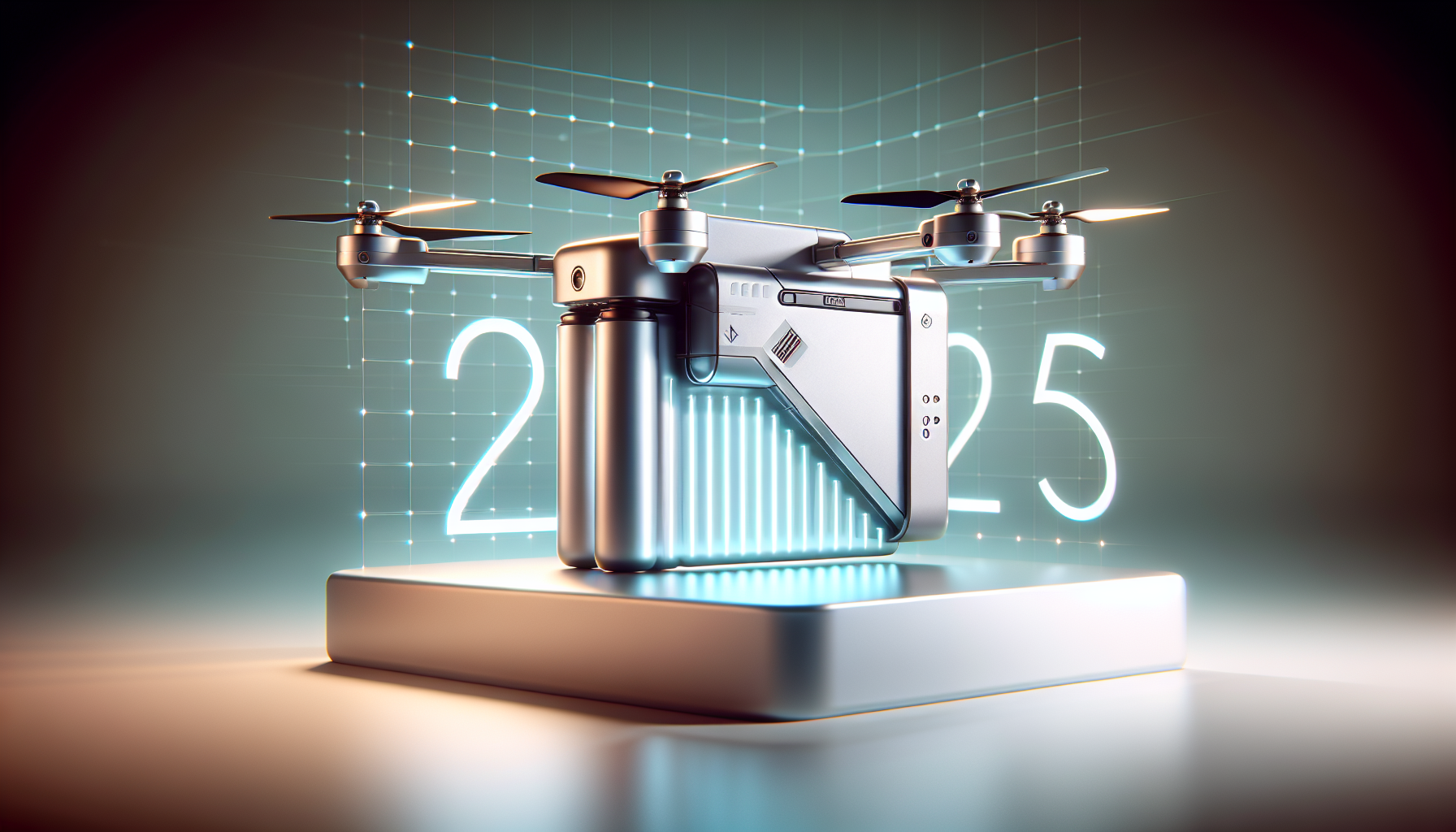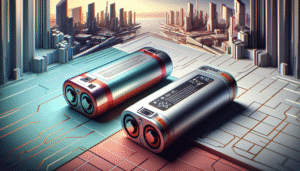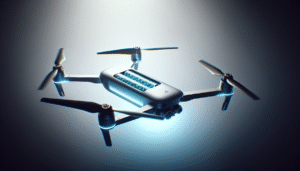Managing multiple portable power stations can be a challenge—especially when each one demands a different charging setup. The 24V 90W Charger Power Supply Adapter with DC7909 + DC8020 simplifies the process with universal compatibility across top brands like Jackery, BLUETTI, Anker, GRECELL, and Goal Zero Yeti. Designed for solar generators and lithium battery packs ranging from 167Wh to 518Wh, this adapter delivers efficient, reliable charging without the technical hassle. Whether you’re powering up for camping, emergency backup, or off-grid work, this versatile charger ensures your gear stays ready when you need it most.

Why Battery Innovations Matter in Drone Technology
It’s easy to overlook the impact of drone battery technology. I mean, when you think of drones, your mind might drift to breathtaking aerial shots or cutting-edge delivery systems, but the unsung hero in these exciting advancements is often the battery. After all, every drone relies on its battery to operate effectively. Without significant improvements in battery technology, our flying friends would be grounded long before they could fulfill their potential.
The Basics of Drone Battery Technology
Before diving into the innovations, let’s look at the basics. Most drones use lithium-polymer (LiPo) batteries. These batteries are preferred because they’re lightweight and offer a high energy density, which means they pack a punch in a small package. However, I’m always mindful of their limitations, like the relatively short flight times and the need for frequent replacements.
The Drive for Longer Flight Times
The quest for longer flight times is more than just a fancy; it’s a necessity. Whether used for cinematic shots, mapping, or delivery, drones need to stay airborne longer to be truly effective. That’s where these innovative battery technologies play a crucial role, and trust me, they are as mesmerizing as they sound.
Top Drone Battery Innovations from 2025
I remember being awestruck by the pace of technological innovation as experts tirelessly worked to leapfrog limitations that we once thought were insurmountable. In 2025, some astounding breakthroughs have changed the way we think about drone batteries, proving that the future is now.
Solid-State Batteries
Solid-state batteries have been a buzzword for a while, and in 2025, they finally became a reality for drones. Can you imagine batteries that are not only safer but can also store more energy in a smaller footprint? That’s the magic of solid-state technology.
- Why It’s Revolutionary: The absence of liquid electrolytes helps prevent the risk of fires, a common concern with traditional LiPo batteries. I’m especially thrilled about how these batteries allow drones to operate at higher efficiencies.
The Emergence of Graphene Batteries
Graphene seems like a modern-day magic trick; that’s how transformative it is. Having always been intrigued by the properties of graphene, I’m thrilled to see its application in drone batteries.
- Increased Energy Density: Graphene batteries offer significantly higher energy density, translating to longer flight times. It feels almost poetic how this single-layer lattice of carbon atoms could elongate a drone’s airtime so dramatically.
- Faster Charging Times: Imagine being able to charge your drone in minutes instead of hours. That’s precisely what graphene promises.
Hydrogen Fuel Cells
Hydrogen fuel cells are another groundbreaking development that’s caught my eye. Although complicated and slightly more expensive, they offer a glimpse into a potentially limitless future for drones.
- Longer Range: With hydrogen fuel cells, drones can achieve flight times that were previously unimaginable. I find it exhilarating to think about deploying a drone for over an hour without worrying about the battery running out.
- Substantial Efficiency: Unlike batteries that deplete during use, hydrogen fuel cells continuously produce energy, enhancing operational effectiveness.
Battery Management Systems (BMS)
Advancements in Battery Management Systems have significantly improved battery efficiency and lifespan. I’ve always believed that intelligence within technology is its own form of art, and BMS exemplifies this.
- Real-Time Monitoring: BMS allows for real-time monitoring of battery health, providing instant feedback that improves performance and safety. I love how it feels like having an onboard engineer taking care of the technical nuances.
- Increased Safety Features: By preventing overcharging and overheating, BMS ensures that the battery (and drone) remains safe during operation.

How These Innovations Affect Drone Usage
Understanding these technological innovations is one thing, but seeing their application is quite another. I find it fascinating how these improvements have transformed various industries that rely on drone technology.
Aerial Photography and Videography
One of my passions is photography, so witnessing the drastic improvements in aerial photography through these battery innovations is a delight. Longer flight times and quicker recharges mean more opportunities to capture the perfect shot without waiting around.
Industrial and Commercial Applications
From agriculture to infrastructure inspections, drones make life easier by providing access to hard-to-reach places. With improved battery life, drones have become even more indispensable in these sectors. I can’t help but imagine how much more efficient projects have become, thanks to these advancements.
Consumer Use
Even for hobbyists like me, better battery technology makes flying drones more convenient and fun. Imagine setting your drone on a picturesque flight path without worrying about the battery dying halfway through. That reality is now.
Challenges and Criticisms
Of course, not every innovation is perfect. I find it important to acknowledge some of the challenges and criticisms surrounding these new technologies, as understanding both sides provides a more balanced view.
Cost Concerns
These cutting-edge technologies inevitably come with a higher price tag, at least initially. Although I can appreciate the innovation, it’s worth noting that not all enthusiasts can readily afford to upgrade their equipment. However, as with most technology, the cost is expected to decrease over time.
Technical Complexity
Advanced battery technologies require specialized knowledge for maintenance and repair. While exciting for tech enthusiasts, it might deter those who prefer simplicity. I often muse about those among us who are less tech-savvy, grappling with the intricacies these innovations bring.
The Future of Drone Battery Technology
If the innovations of 2025 are anything to go by, the future of drone battery technology seems limitless. I find myself daydreaming about what could come next. Could we see nuclear batteries making their way into consumer drones? Only time will tell!
Collaborative Development
The collaboration between technology companies, researchers, and industry professionals plays a crucial role. I admire how the pooling of expertise and resources accelerates the pace of progress. It’s like watching a symphony of innovation unfold.
Environmental Considerations
As we look ahead, the environmental impact of drone battery manufacturing must be addressed. Efforts to make greener batteries are likely to gain momentum, ensuring that technological progress doesn’t come at the planet’s expense. I’m particularly encouraged by initiatives aiming for sustainability, providing hope for a balanced future.
Final Thoughts
Reflecting on these advancements, I’m filled with a sense of awe and wonder about what we’ve accomplished and what lies ahead. In the rapidly advancing world of drone technology, battery innovations from 2025 stand out as pivotal milestones that push boundaries and inspire endless possibilities. If you’re as fascinated as I am, you’ll agree that these developments make the future of drone technology remarkably bright. In the meantime, I’ll continue to marvel at how far we’ve come and how much further we can go with a little innovation and imagination.


